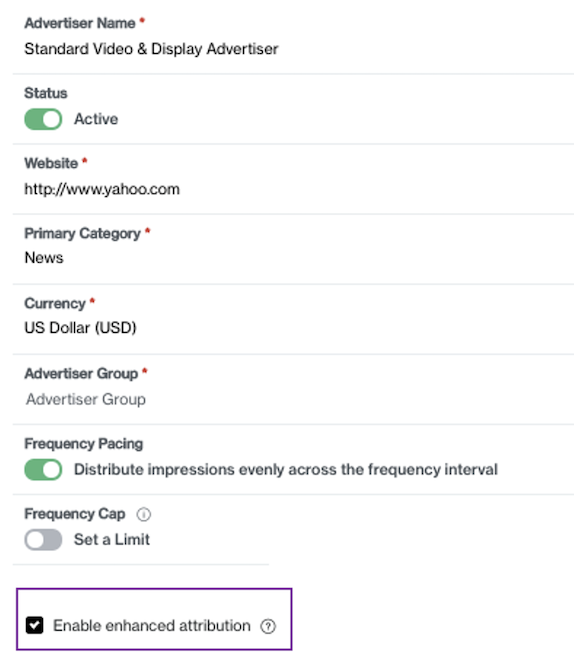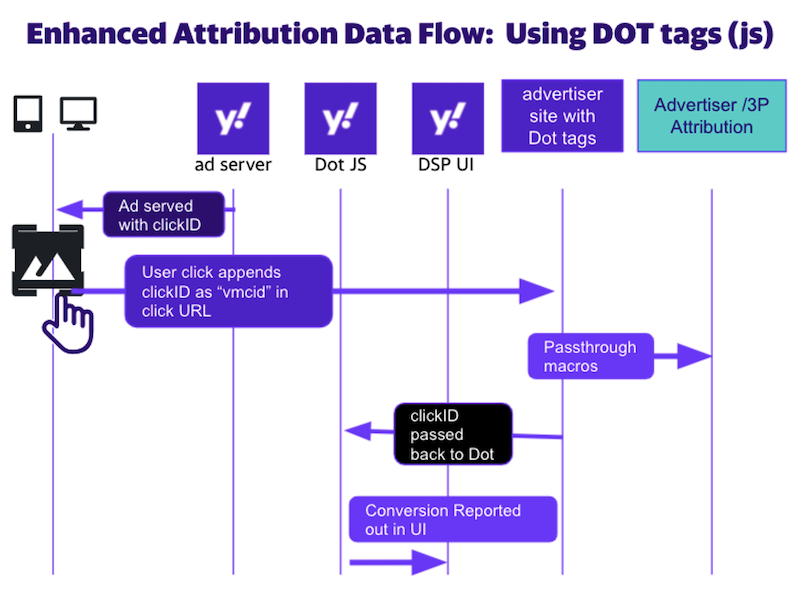Track User Activities¶
Abstract¶
Describes how to track user activities both online and offline by selecting the types of pixels you wish to turn on and off in the DSP user interface.
Overview¶
You can track both online and offline user actions. Online user actions include anything that a user does online, like viewing impressions, clicking a Buy button, or creating an account. Offline actions include physical visits to your store (or a store that sells your products).
Important
To track click-through conversions where third-party cookies are not available, you can turn on Enhanced Attribution to automatically generate and pass a privacy-safe click tracking ID for measurement of ad performance.
How It Works¶
To create and manage your online and offline pixels, navigate to the Tracking tab in the DSP UI:
From the DSP settings panel, click the Advertisers tab.
Select the link for the advertiser you are working with.
Click the Tracking tab.
Select the type of pixels you want to create.
Select one of the following tabs:
Pixels (Online). To track online activities, like viewing impressions, clicking a Buy button, or creating an account. See Online Tracking for more details.
Pixels Offline. To track store visits. See Offline Tracking for more details
Enable Enhanced Attribution¶
To track click-through conversions where third-party cookies are not available, you can turn on Enhanced Attribution by navigating from the Advertiser page to the Advertiser Properties tab and clicking the checkbox, as shown below.

This feature provides a click ID to those who click on ads and the advertiser, which the advertiser can then send back to the DSP to confirm a conversion action has occurred as a result.
The click ID passback can occur either via a JavaScript tag on the advertiser site, or via a API endpoint (server-to-server). Once turned on, a macro will be automatically appended to newly created ad tags running in the DSP, and should be appended via third-party platforms where necessary.

If Dot JavaScript site tags are used, you may send attributed conversions (including those with click ID) back to the Yahoo DSP via the API. See Server-to-Server Implementation 1.0 for details.